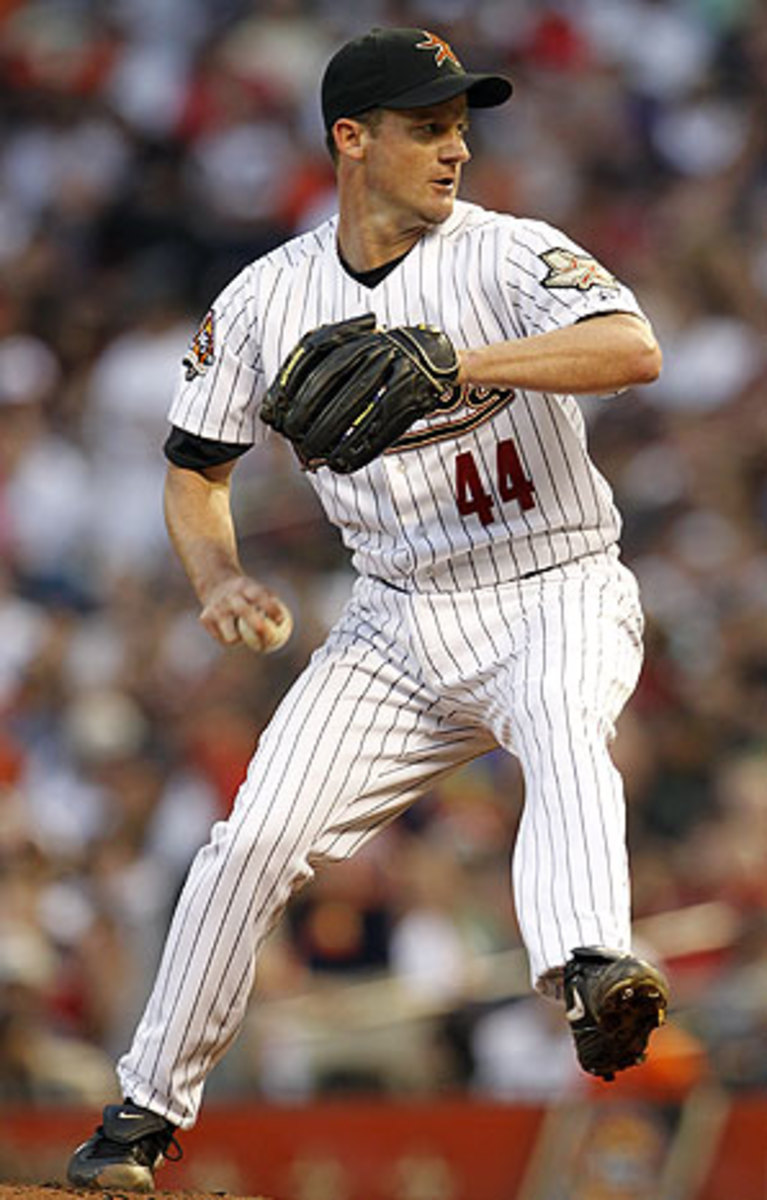Oswalt trade proves that for Phillies, now is all that matters
The Beast requires constant feeding, and that is why Roy Oswalt is a Phillie today. Another organization sitting 2 1/2 games out of the wild card and 3 1/2 games out of first place could have passed on the expense, in dollars and prospects, that it took to add a pitcher about to turn 33 years old. But Philadelphia proved it is one of the three organizations in baseball that must feed The Beast. Only the Yankees, Red Sox and Phillies operate with this mandate: World Series or bust.
Making the playoffs? That's fine for 27 other franchises. But the Yankees took on The Beast in 2000 and the Red Sox in 2008, and now Philadelphia has it.
Phillies GM Ruben Amaro Jr. didn't fully want to acknowledge the mandate last winter when he foolishly dealt pitcher Cliff Lee in order to do something The Beast cares nothing about: "restock our farm system." It may have been smart baseball for 27 other teams, but not The Big Three. Winning today, not tomorrow, is all that counts. When Boston GM Theo Epstein, for instance, talked about a "bridge" season this year as the Sox waited for young players to develop, the fanatics of Red Sox Nation were ready to heave him off said bridge.
Seven months after trading Lee, Amaro got it. He traded pitcher J.A. Happ and two prospects for Oswalt, who will pitch only about 12 games for Philadelphia this year and is signed for next season. But Oswalt is about October, too, because Amaro knows Roy Halladay, Cole Hamels and Oswalt can get him back to the World Series -- not just into the National League Division Series or Championship Series -- if the Phillies get into the tournament.
To understand the transformation of Phillies baseball, you need only go back four seasons, to 2006. That year Philadelphia drew 2.7 million fans, ranking seventh among the 16 National League teams. They spent $88 million on payroll. And in their organization were pitchers Hamels, Happ, Brett Myers, Randy Wolf, Gavin Floyd, Gio Gonzalez, Kyle Kendrick, Carlos Carrasco, Matt Maloney, Josh Outman and Carlos Monasterios.
This year the Phillies rank first in the league in attendance, on pace to draw more than 3.6 million. Their payroll is $141 million. And Happ, Myers, Wolf, Floyd, Gonzalez, Carrasco, Maloney, Outman and Monasterios all are pitching elsewhere.
The Phillies fill Citizens Bank Park every night. Their local TV ratings, which are up 16.5 percent this year, are higher than every team except the Cardinals and Twins, who are regional draws. If you go by the average number of households watching the local team, the Phillies have more eyeballs on them than every team except the Mets and Yankees. Think Red Sox Nation is big? The Phillies' viewing audience is 41 percent bigger than the Red Sox's audience and 60 percent bigger than the Cubs' audience.
In just the past 12 months, the Phillies have traded for Halladay, Lee and Oswalt, traded Lee and handed Ryan Howard and Halladay contract extensions worth $185 million that will pay them huge money through their mid-30s.
Go to Citizens Bank Park and the fans are decked out in Phillies gear of all kinds. The team sells Charlie Manuel jerseys, for goodness sake.
Amaro had a choice when it came to what he provides these people: he could put 36 of his team's final 61 games in the hands of Happ, Kendrick and Joe Blanton, and hope not only that it was good enough to make up the deficit in the standings but also good enough to pitch the Phillies through two rounds of the playoffs. Or he could feed The Beast and go get Oswalt to team with Halladay and Hamels in what could be the best October rotation since the mid-90s Braves with Greg Maddux, Tom Glavine and John Smoltz. Really, there was no choice at all.






